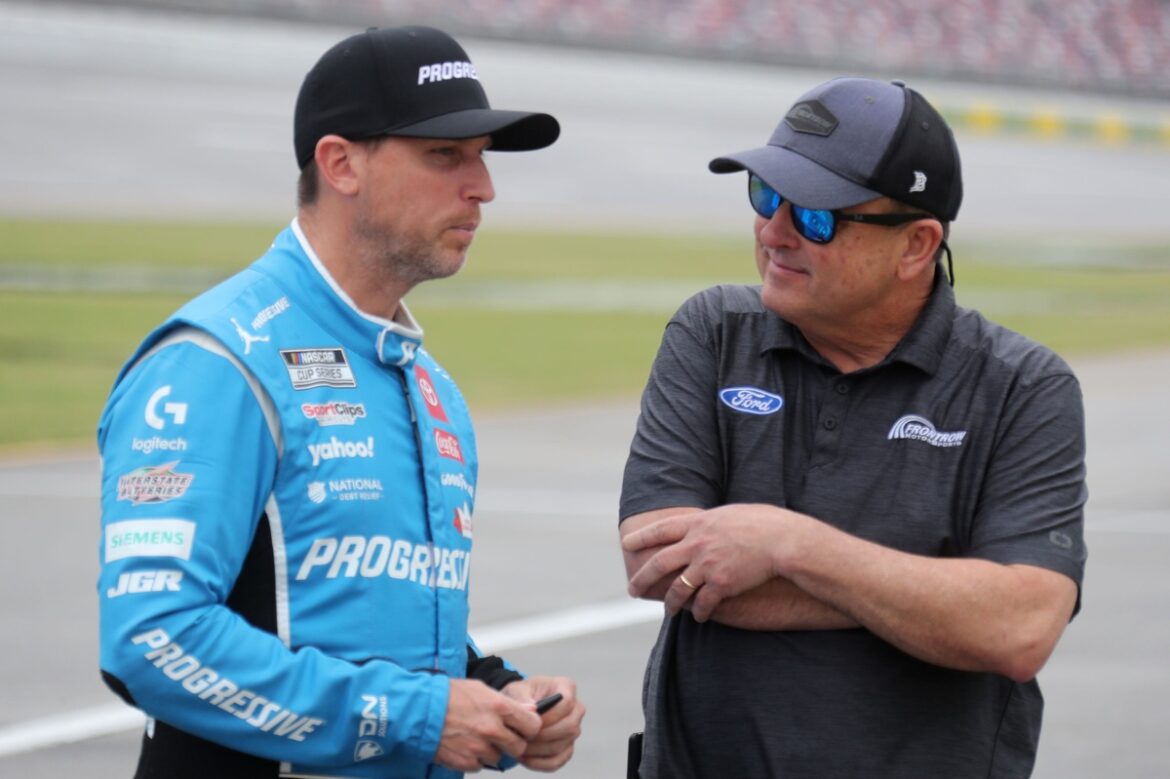In the aftermath of a Charlotte federal judge ruling in favor of 23XI Racing and Front Row Motorsports on the market definition for the lawsuit against NASCAR, plus the dismissal of counterclaims the week before, the two teams have dropped the Section 1 Sherman Antitrust Act portion and will instead continue with its Section 2 claims.
Section 1 of the federal antitrust law prohibits agreements between two or more parties to unreasonably restrain trade, like NASCAR and International Speedway Corporation before the merger, while Section 2 prohibits unilateral conduct of monopolization, or attempts or conspiracy to monopolize.
Where Section 1 focuses on actions such as price-fixing or bid-rigging, Section 2 addresses a single company, in this case NASCAR, allegedly achieving or maintaining a monopoly through anticompetitive conduct.
From the filing:
“Pursuant to Fed. R. Civ. P. 41(a)(2), and in order to streamline the issues for trial, Plaintiffs 2311 Racing LLC d/b/a/ 23XI Racing and Front Row Motorsports, Inc. move the Court for an order voluntarily dismissing, with prejudice, Count Two of their Amended Complaint (Dkt. No. 107) (the “Section 1 claim”), asserted against all Defendants. Plaintiffs are voluntarily dismissing their Section 1 claim so that the upcoming December 1, 2025, trial can focus on Plaintiffs’ Section 2 monopolization claim.”
So now, the lawsuit and trial is purely about the following claims, taken directly from the initial filing.
- Defendants have obtained a monopsony as a buyer of the services of premier stock car racing teams in the relevant market in violation of Section 2 of the Sherman Act, 15 U.S.C. § 2.
- Defendants have engaged in a series of anticompetitive and exclusionary conduct in furtherance of its monopsonization of the relevant market, as alleged further throughout this Complaint. These exclusionary actions are of a continuing nature and constitute new overt acts in furtherance of Defendants’ unlawful monopsony each year.
- Defendants acquired ISC to gain control of many of the most prominent racetracks in motorsports, including Daytona International Speedway, Talladega Superspeedway, and Michigan International Speedway, allowing NASCAR to ensure that no market competitor could ever gain access to these elite racetracks. As for the racetracks that NASCAR does not own, Defendants impose unlawful exclusive dealing provision terms on owners of these independent racetracks as a requirement for hosting Defendants’ Cup Series events. The exclusive dealing provisions prevent the racetrack owners from entering into any agreements to host any other stock car racing event not sanctioned by Defendants at their racetrack venues.
- Defendants also eliminated a potential competitor by purchasing ARCA and its ARCA Menards Series to prevent any potential competition with the Cup Series.
- Defendants have also unlawfully maintained their monopoly through the imposition of covenants not to compete, which restrict chartered teams from competing in any other stock car series or forming such a series. These covenants restrict the availability of the limited supply of premier stock car racing teams, which serves as a barrier to entry to other competitors.
- Defendants have further engaged in exclusionary conduct through their anticompetitive Next Gen requirements. These requirements further lock in the racing teams to NASCAR and further serve as a barrier to entry to preclude the formation of a competitive stock car racing series. They serve no procompetitive purpose to have NASCAR own these car and prevent them from being raced in other events, even after the Charters expire.
- The mandatory release provision of the 2025 Charter Agreement is a further anticompetitive term which protects Defendants’ monopsony. The premier stock car racing teams that compete in NASCAR are the direct victims of Defendants’ monopsony and the most likely plaintiffs to assert their antitrust rights to free up the market to competition. By forcing these teams to sign a release which might cover their antitrust claims as a condition of renewing their Charter Agreements, Defendants are engaging in further anticompetitive conduct to maintain their unlawful monopoly.
- Defendants’ conduct in furtherance of their monopsony of the relevant market is exclusionary in nature, does not consist of legitimate business activities, and is an abuse of its market position. There is no procompetitive justification for this exclusionary and anticompetitive conduct.
- Defendants have exercised their monopsony power by imposing anticompetitive terms through Defendants’ Charter Agreements on Plaintiffs and other premier stock car racing
- Defendants’ monopsonization of the relevant market occurred in and unreasonably restrained interstate commerce.
- Defendants’ monopsonization of the relevant market has directly and proximately caused antitrust injury and damages to the business and property of Plaintiffs. Plaintiffs will continue to suffer antitrust injury and damages unless Defendants are enjoined from continuing to engage in the foregoing violations of law and competition is restored in the market.
- Further, Defendants’ efforts to obtain and maintain their monopsony power has harmed Plaintiffs and competition in the relevant market as set forth above and will continue to do so until Defendants are enjoined from further engaging in conduct to preserve and protect their monopsony power.
- The amount of damages suffered by Plaintiffs has not yet been ascertained. Pursuant to Section 4 of the Clayton Act, Plaintiffs are entitled to recover from Defendants treble the amount of actual damages, as well as an award of reasonable attorneys’ fees and costs of suit.
- Defendants’ violation of Section 2 of the Sherman Act is a continuing violation causing new injury to Plaintiffs, as Defendants continue to engage in new overt acts to maintain their monopsony power and then exercise that power to impose anticompetitive terms of doing business on Plaintiffs. Plaintiffs seek damages for their past four years of antitrust injury from Defendants’ Section 2 violations, plus all damages that they will continue to suffer in the future until Defendants’ Section 2 violations are enjoined.
We want your opinion!
What would you like to see on Motorsport.com?
– The Motorsport.com Team
